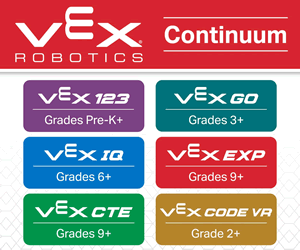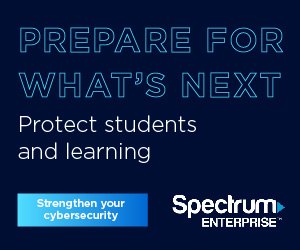Key points:
- Although a majority of teachers believe computer science education is critical, the subject isn’t required–or even offered–nationwide
- Introducing computer science at an early age equips students with the skills and confidence to be curious in STEAM learning
- See related article: 4 resources to differentiate computer science instruction
“I love it so much I would do it every day if we could!” These words are music to any teacher’s ears and I’m lucky enough to hear this sentiment from my students often. Since introducing a new computer science curriculum in 2019, my students at Redlands Unified School District have consistently shown engagement, genuine enthusiasm, and joy in learning.
Defining the importance of early computer science learning
Did you know that by 2030 more than half of the world’s children and young people won’t have the skills or qualifications to participate in the emerging global workforce? Educators like me often don’t have access to the right solutions or resources to prepare students for the future. For example, only 30 percent of K-8 schools offer computer science education even though 71 percent of U.S. teachers believe computer science is “just as important as required courses like math, science, history, and English,” according to the 2021 State of Computer Science Education report.
Computer science is so much more than just coding. It builds foundational and transferable skills, such as logistical deduction, critical and computational thinking, reasoning, and problem-solving. Most importantly, computer science is not just for older or future students to learn; it’s critical for all students to learn right now as technology continues to advance at a rapid pace.
When we set out to transform how we taught computer science, we decided to start with our youngest learners. By starting with kindergarteners, we hoped to build basic building blocks and confidence that would carry them through their learning journey. What I love about bringing computer science to young learners is that we can equip students with the skills and confidence from an early age to be curious in their STEAM learning and pursue more in-depth computer science learning along the way.
- SEO Powered Content & PR Distribution. Get Amplified Today.
- PlatoData.Network Vertical Generative Ai. Empower Yourself. Access Here.
- PlatoAiStream. Web3 Intelligence. Knowledge Amplified. Access Here.
- PlatoESG. Automotive / EVs, Carbon, CleanTech, Energy, Environment, Solar, Waste Management. Access Here.
- PlatoHealth. Biotech and Clinical Trials Intelligence. Access Here.
- ChartPrime. Elevate your Trading Game with ChartPrime. Access Here.
- BlockOffsets. Modernizing Environmental Offset Ownership. Access Here.
- Source: https://www.eschoolnews.com/steam/2023/08/18/computer-science-curriculum-k-5-classrooms/
- :is
- :not
- 1
- 11
- 2019
- 2021
- 2030
- 30
- 31
- a
- About
- access
- According
- advance
- age
- along
- an
- and
- any
- ARE
- article
- AS
- At
- author
- banner
- basic
- BE
- believe
- Blocks
- Bringing
- build
- Building
- builds
- by
- CAN
- carry
- Center
- Children
- coach
- code
- Coding
- computer
- computer science
- confidence
- consistently
- consultant
- content
- continues
- contributors
- Core
- courses
- critical
- curious
- Current
- Curriculum
- day
- decided
- description
- designs
- differentiate
- district
- do
- Dont
- Dropbox
- Early
- Education
- educators
- emerging
- engagement
- English
- enough
- enthusiasm
- Even
- Every
- every day
- example
- extend
- For
- from
- future
- genuine
- Global
- Half
- Have
- hear
- height
- her
- history
- How
- How To
- http
- HTTPS
- i
- if
- implementation
- importance
- important
- in
- in-depth
- incorporates
- initiatives
- Innovation
- innovative
- innovative technology
- integrate
- into
- introducing
- IT
- journey
- just
- Know
- LEARN
- learning
- like
- love
- Majority
- math
- me
- Media
- more
- most
- much
- Music
- my
- New
- now
- of
- offer
- often
- older
- on
- only
- or
- Other
- our
- out
- Pace
- participate
- People
- percent
- Place
- plans
- plato
- Plato Data Intelligence
- PlatoData
- points
- Posts
- Prepare
- problem-solving
- pursue
- qualifications
- rapid
- related
- required
- Resources
- right
- Role
- s
- School
- Schools
- Science
- sentiment
- serves
- set
- she
- shown
- since
- skills
- So
- Solutions
- start
- Starting
- State
- Steam
- Students
- subject
- such
- Supported
- taking
- taught
- teacher
- teachers
- Technology
- than
- that
- The
- The Future
- their
- Them
- These
- Thinking
- this
- though?
- Through
- to
- tools
- Transform
- u.s.
- unified
- Way..
- we
- What
- with
- within
- words
- Workforce
- world’s
- would
- you
- young
- Youngest
- zephyrnet












